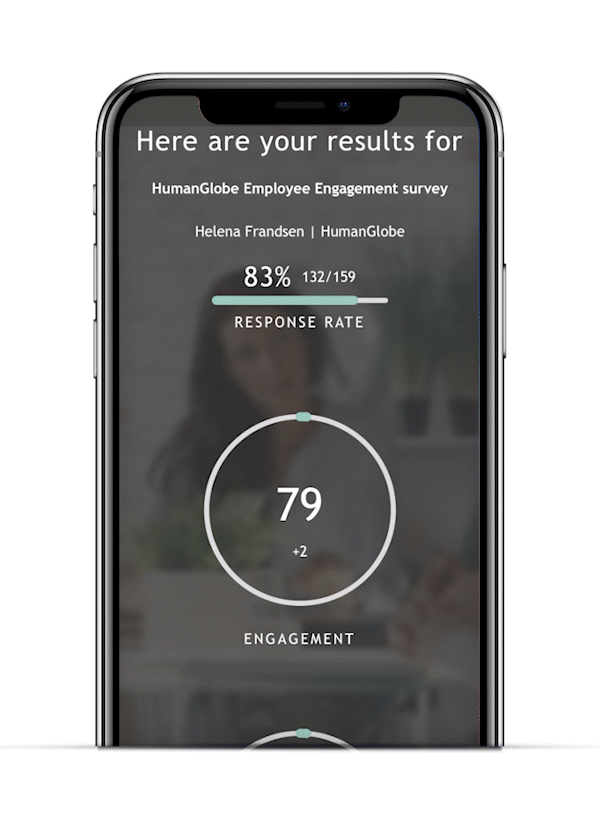What is ESG: Focusing on the social responsibility
Learn about ESG with a focus on Social Responsibility. This guide dives into why the “S” matters, offering practical steps to create sustainable workplaces, boost employee engagement, and track your impact on employees, communities, and social well-being.
Using ESG to Drive Employee Engagement
ESG and employee engagement go hand-in-hand. When employees see that their company is serious about ESG, they’re more likely to feel proud and connected to their work.
This creates a positive cycle where engaged employees help your ESG goals, and those goals, in turn, strengthen employee engagement.
How does this work in practice? By embedding ESG into company culture, you create a work environment that not only attracts talent but also retains it through meaningful engagement.
Want more examples of ESG's impact on employee engagement?
Why Social Responsibility Matters in ESG
Social responsibility goes beyond just meeting basic needs - it’s about creating a workplace that’s engaging, inclusive, and safe, and that positively impacts the community.
Companies with strong social values don’t just attract employees; they keep them engaged, productive, and happy. Plus, socially responsible brands are usually a step ahead when it comes to future regulations and what stakeholders expect.
Managing workplace stress is a big part of social responsibility. But what does stress look like, and how can you spot it?
Unfortunately, stress is becoming more common in the workplace. Here are five easy ways to help reduce stress and keep your team healthy and engaged.

What is ESG, and Why Should Businesses Care?
ESG stands for Environmental, Social, and Governance - a comprehensive framework guiding businesses to adopt sustainable, ethical, and transparent practices.
Why should businesses care about ESG? Because it’s a game-changer.
Companies that integrate ESG into their strategy often experience improved financial performance, reduced risk, and strengthened stakeholder trust. ESG isn’t just about compliance; it’s about building a future-proof business.
Here’s what each component entails:
Environmental Responsibility
Environmental looks at how your company impacts the planet - from resource management to reducing carbon footprints.
By reducing waste and conserving resources, companies not only align with regulatory expectations but also respond to the growing demand for environmentally responsible businesses.
Social Responsibility
“The ‘S’ in ESG is all about people - your employees, your customers, and the community around you. It covers things like employee engagement, diversity and inclusion, health and safety, and community relations.
Companies with strong social practices often see higher employee engagement, productivity, and retention rates, as well as stronger brand reputation.
Governance
Governance is all about accountability and transparency. Good governance practice make sure that your company operates ethically, builds trust and stays on track with compliance.
It’s about having the right systems in place to keep everything running smoothly and responsibly.
The Link Between ESG and Employee Engagement
Employee engagement is the missing piece that can take your ESG strategy to the next level. When companies commit to ESG, employees feel more connected to a shared purpose, which boosts their motivation and loyalty.
For example, companies that regularly check in on employee well-being through surveys often see benefits like higher productivity, less absenteeism, and better profits.
How to Create a Sustainable Working Environment?
Creating a sustainable work environment means recognizing that employees aren’t just workers - they’re people with lives outside of work.
A sustainable work culture respects this by helping to prevent burnout, promote mental health, and ensure leaders take accountability for everyone’s well-being.
Here are a few ways to start:
- Keep workloads balanced and prevent burnout
- Promote mental health and well-being
- Hold leaders accountable for long-term employee well-being.
Who is responsible for this?
Building a sustainable environment is a shared responsibility among top management, leaders, and employees. Learn more about fostering sustainable workplaces here.
Strengthening ESG Initiatives Through Cultural Change
Corporate culture is the backbone of any successful ESG strategy. Without a culture that supports ESG, even the best initiatives might struggle to take off. Cultural change helps make ESG a natural part of how your company operates, creating real, lasting impact.
See how fostering positive cultural change can strengthen ESG initiatives and create lasting impact.
/Circle_MasteringEmployeeEngagement.png?width=800&height=800&name=Circle_MasteringEmployeeEngagement.png)
Measuring and Reporting on ESG Social Responsibility
Measuring social performance is the first step toward making real improvements. Start by collecting employee data to get a sense of your impact.
Here are a few key areas to focus on:
- Employee engagement surveys: How satisfied and aligned are your employees?
- Diversity metrics: Keep track of representation and inclusion efforts.
- Health and safety metrics: Understand incidents and perceptions of workplace safety.
Each of these metrics gives you a clear picture of your company’s social responsibility. Discover more ways to collect social performance data here.

Key ESG Metrics and Social Performance KPIs
To really understand and improve your social impact, set up KPIs that align with your ESG goals.
Here are a few important ones:
- Employee engagement score: Measures how motivated and engaged your employees are.
- Diversity representation: Tracks the demographic diversity of your workforce.
- Safety metrics: Looks at workplace safety and overall health, including incidents and the safety climate.
Each KPI helps you see what’s working and where you might need to improve.
Summary: Making ESG a Core Part of Your Strategy
Bringing ESG into your business strategy is about more than compliance—it’s about creating a resilient, future-ready company. From reducing environmental impact to fostering social responsibility and promoting transparent governance, ESG practices help your business grow sustainably.
Want to make ESG part of your success story? Get in touch to find out how Ennova’s insights and tools can support you. Whether you need data-driven surveys, strategies for cultural change, or expert advice, we’re here to help you make real progress.

Stay up to date, always
Get your monthly dose of inspiration and guidance with our exclusive newsletter, Ennova Insight!
Subscribe today and get the latest employee experience trends, actionable tips and proven strategies delivered straight to your inbox.




